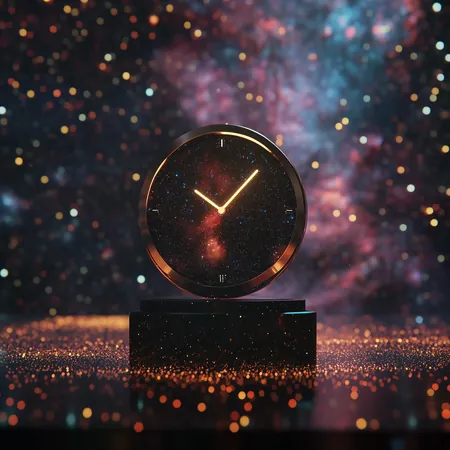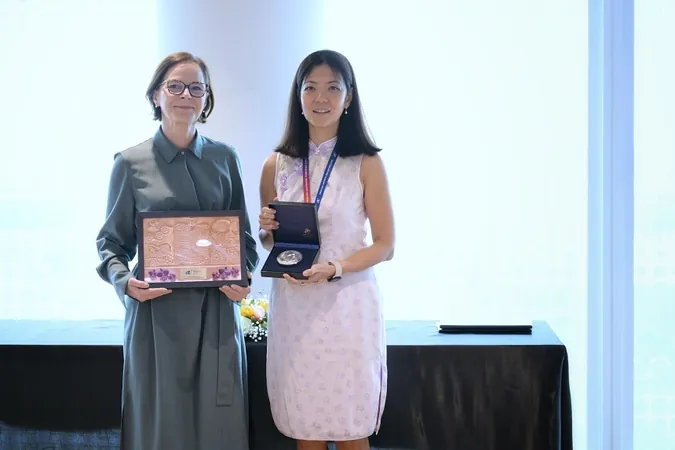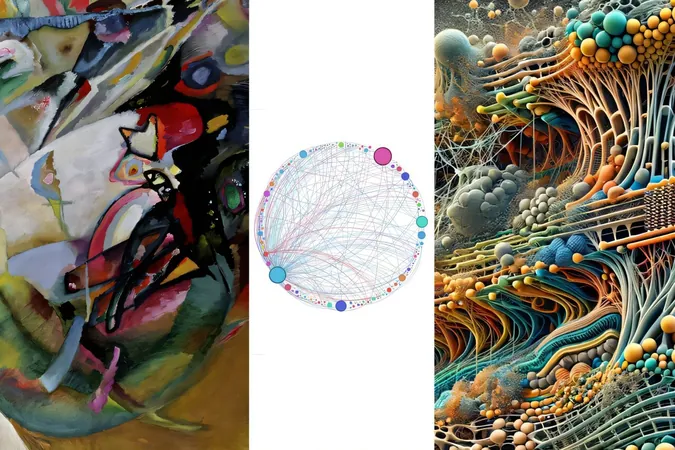
Atomic Clocks in Space: A Quantum Leap in Testing Einstein's Theories
2024-11-06
Author: Rajesh
Atomic Clocks in Space: A Quantum Leap in Testing Einstein's Theories
In an ambitious project spearheaded by the European Space Agency (ESA), the Atomic Clock Ensemble in Space (ACES) mission is uniquely positioned to rigorously challenge Einstein's revolutionary theory of general relativity. By deploying high-precision atomic clocks aboard the International Space Station (ISS), scientists aim to investigate fundamental physical constants and potentially reshape our understanding of time.
Precision Meets Quantum Technology
The mission features two leading atomic clocks: the PHARAO (Projet d’Horloge Atomique par Refroidissement d’Atomes en Orbite) and the SHM (Space Hydrogen Maser). PHARAO, which utilizes laser-cooled cesium atoms, is designed for long-term frequency stability, while SHM serves as an active oscillator to deliver a highly stable reference frequency. Together, they produce an astounding fractional frequency stability of 1 × 10⁻¹⁶—an accuracy level that allows for the detection of minute discrepancies in time.
These ultra-precise time signals are set to revolutionize the global synchronization of clocks, enabling researchers to engage in "chronometric geodesy." This innovative method allows for detailed measurements of varying gravitational potentials around the planet—a pursuit that could change our understanding of Earth’s gravitational field and might even hold clues about elusive phenomena like dark matter.
Unveiling Gravitational Redshift
Einstein's general relativity posits that time and gravity are intrinsically linked: the stronger the gravitational pull, the slower time ticks. This gravitational redshift phenomenon suggests that clocks nearer to massive bodies, like Earth, will perform differently than those farther away in space. ACES will leverage this principle, comparing time signals from its atomic clocks aboard the ISS to those on the ground, allowing scientists to test Einstein's predictions with unprecedented accuracy.
The potential findings of ACES could either solidify our existing theories or illuminate new paths in physics. A deviation from established models could lead to a re-evaluation of fundamental concepts within the field. Conversely, verifying Einstein's theories at such precision would help strengthen technological systems reliant on accurate timekeeping—think GPS and global navigation technologies—affecting daily life in profound ways.
Tackling Technical Challenges
Despite the significant advancements the ACES mission promises, it does not come without challenges. Managing the intricate operations of the PHARAO and SHM clocks in the demanding environment of space has necessitated extensive testing and calibration. Factors such as atomic collisions, signal degradation, and environmental fluctuations all present hurdles that the ACES team is diligently working to overcome.
The ISS's unique conditions—including microgravity and unreliability in temperature—require robust systems to minimize noise interference and ensure system stability. Engineers have developed advanced servo-loop systems designed to counteract these variables, adding layers of sophistication to the mission.
The Future of Timekeeping and Physics
As ACES moves forward into its operational phase, it has the potential not only to redefine standards for timekeeping but also to set a precedent for future endeavors in space-based quantum technology. Researchers anticipate that the outcome could lead to breakthroughs in various scientific domains, including enhanced Earth observation techniques, insights into tectonic movements, and innovations that might deepen our comprehension of climate change.
In a world where time is not merely a measurement but a fundamental aspect of our universe, the ACES mission stands at the precipice of discovery. Will it validate Einstein or reveal flaws in his theories? Only time will tell. But one thing is certain: the outcomes of this pioneering initiative have profound implications for science and technology alike.



 Brasil (PT)
Brasil (PT)
 Canada (EN)
Canada (EN)
 Chile (ES)
Chile (ES)
 España (ES)
España (ES)
 France (FR)
France (FR)
 Hong Kong (EN)
Hong Kong (EN)
 Italia (IT)
Italia (IT)
 日本 (JA)
日本 (JA)
 Magyarország (HU)
Magyarország (HU)
 Norge (NO)
Norge (NO)
 Polska (PL)
Polska (PL)
 Schweiz (DE)
Schweiz (DE)
 Singapore (EN)
Singapore (EN)
 Sverige (SV)
Sverige (SV)
 Suomi (FI)
Suomi (FI)
 Türkiye (TR)
Türkiye (TR)